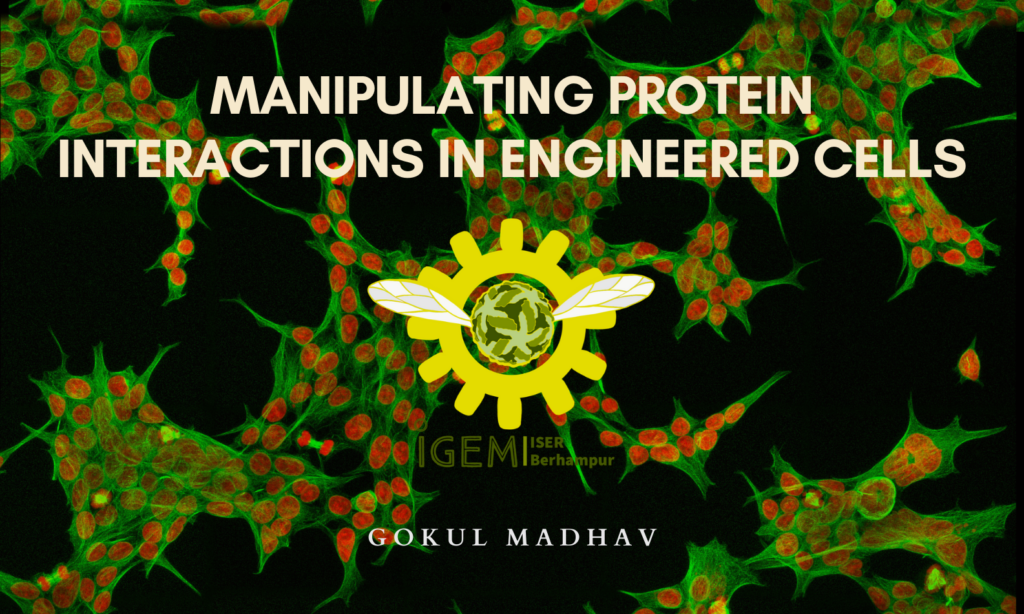
Virtually every function of living organisms is accomplished through the proteins it produces. From the central dogma, we can say that transcription of DNA leads to RNA, translation of RNA produces proteins. Even more complex are the interactions of these proteins, orchestrating different cascades in our cells – “signalling pathways”, which mediate the cellular functions and roles. While the complexity is riveting in itself, science has strived to make possible its investigation in laboratory setups.

Humans have been using microorganisms for their needs for several years. Yeast to convert sugar into alcohol, lactobacillus for converting milk to curd and cheese. Insulin was one of the first proteins to be synthetically produced in 1963. The gene for insulin was isolated from humans and stitched into a bacterial plasmid. The recombinant bacteria were allowed to grow and reproduce in culture. Owing to their fast growth rates, a huge quantity of the hormone could be manufactured via this method. Scientists have since then, come up with various methods to synthesize proteins in the lab. The arrival of recombinant DNA technologies and DNA sequencing opened a new paradigm for protein synthesis. This made it easier, cheaper and faster to produce proteins in the lab.
The field has had its own share of controversies too. In 1972 a patent for a micro-organism was filed in the US by Ananda Chakrabarty. This micro-organism was a bacteria that could break down molecules of crude oil. The Supreme Court of the United States approved the patent in 1980, the case popularly known as Diamond vs. Chakrabarty.
Is it possible for humans to edit DNA to produce the protein of our choice? Conventionally, we take a DNA plasmid, incorporate the gene of interest into the plasmid and transfer the plasmid into a microorganism (bacteria or yeast) which is easy to grow, and culture them in the lab. This process is known as “cloning”. Frequently this is followed by transfecting the recombinant plasmids into mammalian cells or model organisms to study various effects. Emerging gene-editing technologies like Zinc Fingers, CRISPR and Transposons can accelerate these processes and allow for finer manipulation of the genome.
Now that we have expressed the proteins, how do we know whether two proteins are interacting or not? Imagine that you are watching an auto-racing event. One of the cars is marked with blue paint and another with red. By any chance, if there is a collision between the blue and the red car there will be smoke and fire. Along a similar line, we can tag a protein of interest with a marker (usually a fluorescent protein of a particular colour) and another protein of interest with a different fluorescent tag. When these two proteins interact a new colour is produced. Alternatively, we could divide the tag into two halves and add one half to one of the proteins and the other half to the other protein. When the proteins come together, these halves would reassemble to produce the complete tag, which would then emit its characteristic fluorescence when excited energetically. None of the halves would be able to do this without its counterpart. Several such ingenious mechanisms have been designed to study interactions within cells and understand their significance in biological processes.

Credits : https://commons.wikimedia.org/wiki/File:FPbeachTsien.jpg
The iGEM (see note) team from IISER Berhampur are working on engineering cells to study the dengue disease. When a person gets infected by a virus, there will be many interactions between proteins : both human and virally encoded ones. From the virus recognising human cells to the multiplication of virus particles, these interactions mediate the severity of disease progression. Team IISER Berhampur is engineering a specific interaction between the Dengue virus and its human protein target in the lab that will act as a screening system for designing possible therapeutics. Several of the previously mentioned principles are being exploited in the project and there is hope for building an effective design that can aid researchers in tackling not only Dengue but several other diseases as well.
Note: International Genetically Engineered Machine (iGEM) is an international competition for high school and undergraduate students to show their skills in synthetic biology. There are many teams participating from India and other countries every year to devise innovative solutions for day-to-day problems. (If you want to know more about it, there’s a blog on The Qrius Rhino on the same)
If you want to know more about the project by team iGEM IISER Berhampur, visit their website : https://sites.google.com/iiserbpr.ac.in/igemiiserberhampur

They are also looking for support for funding their project via a sponsorship offered by Molecular Cloud. By garnering the maximum number of votes for this month, they can receive the stipend to substantially assist their work. If you feel up to it, do vote for them here: https://www.molecularcloud.org/html/igem/detail/62.html
By Gokul Madhav, Department of Biological Sciences, IISER Berhampur.
Team Member, iGEM IISER Berhampur. (2020)
Feature Image: HEK 293 cells with immunofluorescence https://commons.wikimedia.org/wiki/File:HEK_293.jpg; iGEM IISER Berhampur 2020 Team Logo

About the Author: Gokul is a 3rd-year BS-MS student majoring in Biology. He is interested in interdisciplinary sciences. He likes to read about a variety of topics from Biology to History and Philosophy. He is also a member of 2020 iGEM Team of IISER Berhampur.
3 thoughts on “Manipulating Protein Interactions in Engineered Cells”